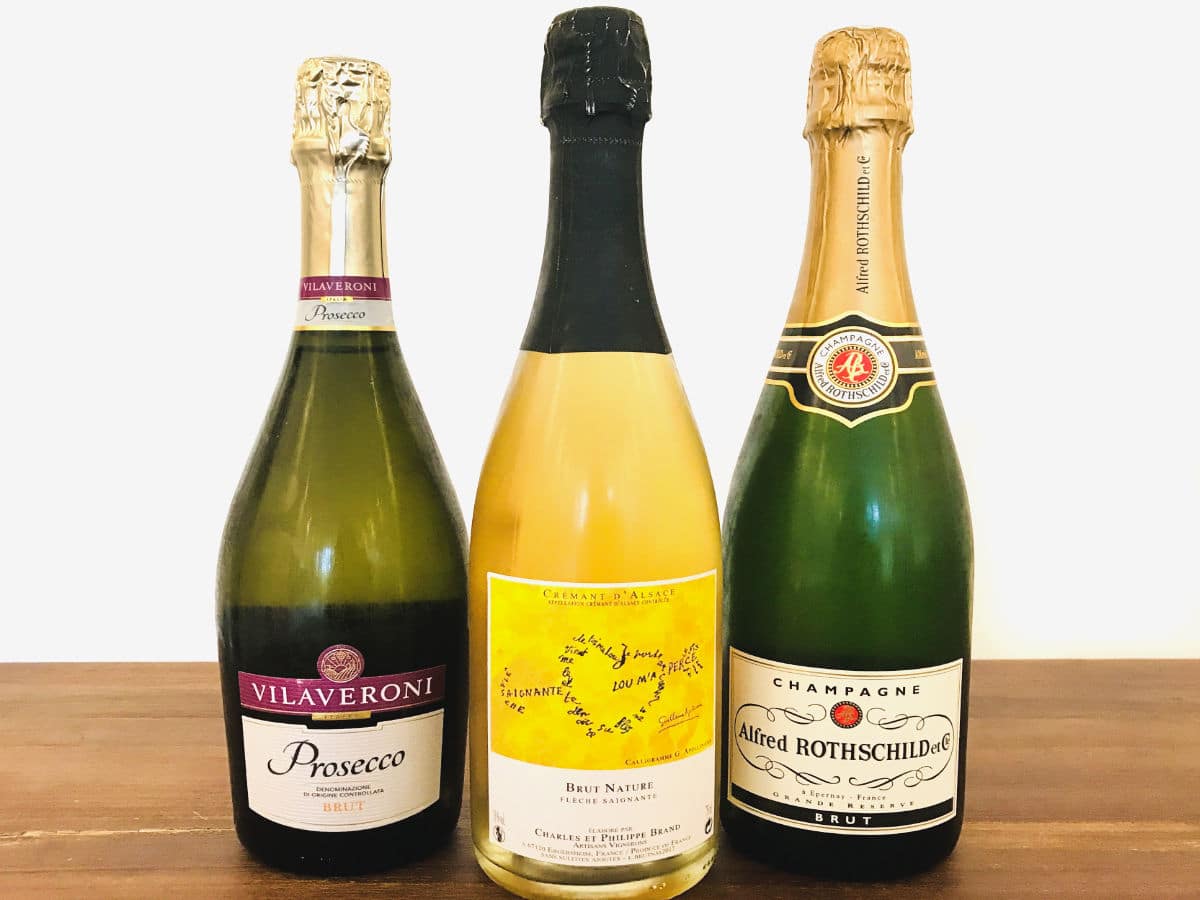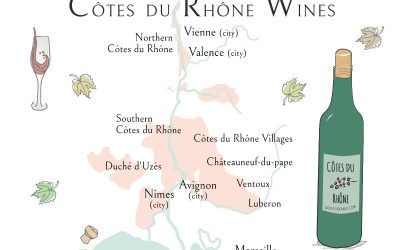The French are renowned for their winemaking savoir faire, making some of the best wines in the world, and not to mention champagne.
A good bottle of champagne brings people together in celebration and creates emotions that can be indescribable. But if you don’t have a champagne budget, you may want to look at a French sparking wine known as crémant which is quite similar to the Italian prosecco or Spanish cava.
Champagne connaisseurs may sniff their nose at crémant being compared to champagne, but there is a case to be made for drinking and appreciating a crémant.
While it doesn’t have the same name recognition, it uses many of the same techniques. And with similar grapes and vineyards, it has a distinguished taste and aroma in its own right making it a favorite among wine makers and wine-lovers.
So let’s look at the tradition and history of drinking crémant, as well as what makes it unique from champagne and other sparkling wines, shall we? Allons-y!
What is a Crémant?
Crémant is a vin mousseux, meaning sparkling wine. Most sparkling wines in France are produced in the same way as Champagne, except they do not come from the Champagne region.
Crémant is produced all over France, with the most famous wine-making areas being Alsace, Loire Valley and Bourgogne.
The main grapes used in crémants and French sparkling wines are Chardonnay, Pinot Noir and Pinot Meunier.
In fact, the Blanquette-de-Limoux is the oldest sparkling wine in France, a sparkling wine that is even older than champagne. (The story from the Limoux side is that a monk from Limoux gave the recipe to the monks from Champagne, but this has not been proven.)
However, not all vin mousseux or sparkling wines are considered crémants. A crémant is a sparkling wine of selective quality, with its own protected AOC appellations.
The recipes and quality behind each crémant AOC are just as technical as any good bottle of wine, with the full protection of French and European law.
Crémant vs Champagne?
You’ve probably heard the famous ‘pop’ of a bottle of Champagne at New Year’s. However, you could also potentially get that ‘pop’ with crémant.
Both are crémants and champagnes are made with almost the same techniques. However, the word “Champagne” is a protected trademark for vines grown in the Champagne region of France.
In order to create a sparkling wine, the grapes are pressed at a harvest and the juice is fermented to convert the natural sugar in the grapes into alcohol while the resultant carbon dioxide is allowed to escape. This produces the base wine.
After primary fermentation, there is a blending (assemblage) and bottling with yeast and a small amount of sugar, allowing a second alcoholic fermentation to occur in the bottle, adding the bubbles.
The differences between crémants and even amongst different types of champagnes are:
- the soil the grapes are grown in
- climate
- sugar levels
- recipe blend of the cellar master
Why is Crémant cheaper than champagne?
Part of the difference between the price tag of a bottle of champagne and a crémant is simply marketing.
Sparkling wines have been produced in France as early as the days of the Roman Empire. But the name “Champagne” became famous in France and around the world due to 2 men.
The first was a monk named Dom Perignon in the 17th-century in the outskirts of Reims, who came up with the idea of matching grapes together to come up with particular notes (rather than throwing random grapes together). He also used thicker bottles which helped prevent the bottles from exploding during transport.
This was key to getting the name “champagne” known around the world, as it could now be exported. The 2nd man was his successor in the 18th-century, Dom Grossard, who proclaimed Dom Perignon as the “inventor of Champagne” to augment the prestige and the history of their church and of their sparkling wine.
This clever bit of marketing made it stand out from other older sparkling wines in Limoux and other parts of France.
These days, French brasseries claiming to serve a Kir Royale which is supposed to include champagne, they are likely actually serving a crémant in there as most people cannot tell the difference, especially when it is in a cocktail.
Different types of crémant
The production process uses the same “méthode champenoise” as a champagne, and thus crémants have their own protected AOC/AOP designations in Alsace, Burgundy, Loire, Bordeaux, etc.
The most popular crémants on the market are:
- crémant d’Alsace (approximately 50% of the market)
- crémant de Bourgogne (20%)
- crémant de Loire (18%)
- crémant de Limoux
- crémant du Jura
- crémant de Bordeaux
- crémant de Savoie
Like champagne, crémants also come in different levels of sweetness. A brut crémant is one with minimal sugar. Crémants are also available in rosé.
Crémant vs Prosecco vs Cava
Now if you are wondering where prosecco fits in all this, well a prosecco is Italian, while crémants are French.
The Prosecco generally comes from the Veneto region of Italy and is made with glera grapes. The fermentation process is also a bit simpler. Crémants tend to be a bit drier (meaning with less sugar) than proseccos, and arguably are more flavorful.
As for the Cava, it comes from Spain and is made with macabeu, parellada and xarel grapes. In the past bottles of Cava did not have the same savoir faire and quality as crémants, but in recent years the quality has much improved.

So are you ready to try a crémant? If you enjoyed that article, you may like reading more about other popular French foods and drinks. A bientôt!




